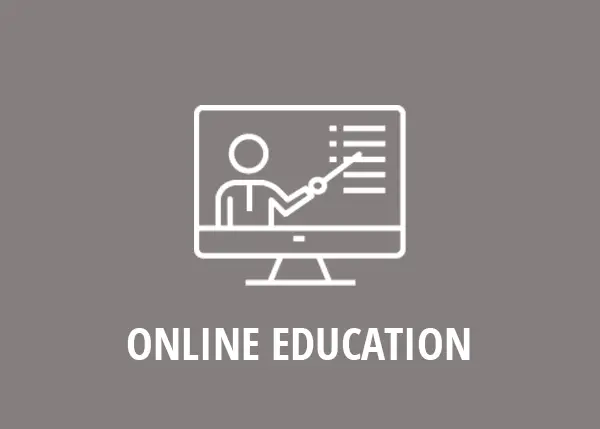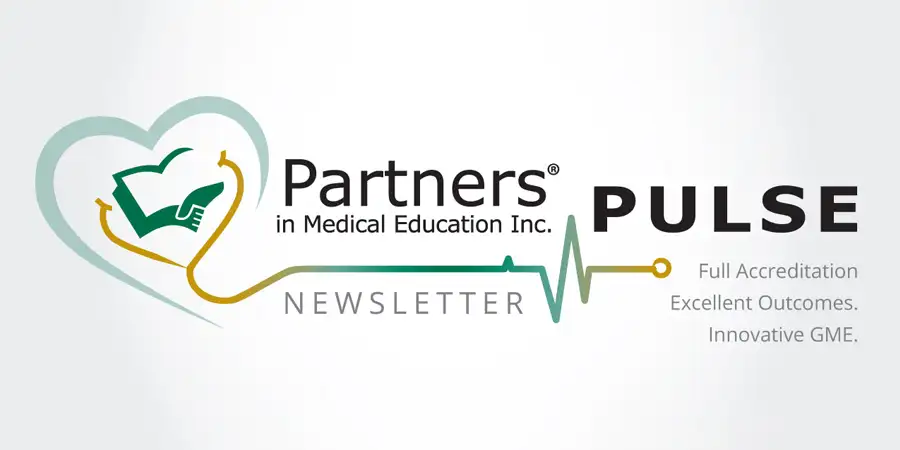Jump to Article
Sponsoring Institution
Program
GME Office / Administration
Finance / Public Policy

Sponsoring Institution
By: Tori Hanlon, MS Tori@PartnersInMedEd.com
How Your SI Can Support and Prepare Programs for the ACGME Surveys
The annual ACGME Surveys are right around the corner. The surveys provide insight to SIs on programs’ clinical learning and working environments, as well as an early warning of potential non-compliance with ACGME requirements. As the SI must have “authority and oversight” of GME programs, it plays a crucial role in supporting and preparing programs for these high stakes surveys that can trigger a site visit.
We’ve broken down ways the SI can assist programs pre-survey, during the survey and post-survey.
Pre-Survey
- Educate new Program Directors and Coordinators on the survey and how results are used by the SI and the ACGME (Tip: a neutral answer is considered non-compliant by the ACGME)
- Provide programs with education and resources they can take back to their residents and faculty to prepare them for the survey (some of these resources can be found on the ACGME website, https://www.acgme.org/data-systems-technical-support/resident-fellow-and-faculty-surveys
- Survey content areas – Provides residents with an overview of the survey content areas, including question content. This is particularly helpful for PGY1s and new faculty who have never taken the survey before.
- Survey key terms – Provides definitions to some of the common terms found in the survey. Survey terms are important because a resident or faculty member’s definition/perception of a term may not be the same as the ACGME’s. Residents and faculty need to understand what the ACGME’s definition/interpretation is in order to answer the survey question.
- Survey talking points – Provides additional, program-specific information for each of the survey content areas.
- Example – opportunity to evaluate program (In our program, residents complete an anonymous annual program evaluation in May of each year through our residency management system)
During Survey
- Monitor survey compliance during the survey window. There must be at least a 70% response rate.
Post-Survey
- Review institutional and program-specific survey results at a GMEC meeting.
- Require programs to submit action plans on survey questions with low compliance.
Click HERE for Partners ACGME Survey Best Practices document. Partners does provide consulting services for SIs or programs looking for additional assistance in preparing for the ACGME survey and educating stakeholders.

Program
By: Christine Redovan, MBA, MLIS Christine@PartnersInMedEd.com
Creating the rank order list (ROL).
Creating the rank order list (ROL) can be a stressful time for program directors and their programs. How many candidates do I have to rank? Will I get my top choices? Will I have to SOAP? What if no one wants to come to my program? All are very real (and normal!) questions that all program directors have regardless of being a new program or if you have been in business for decades. Let’s look at some tips and strategies for creating your ROL.
Preliminary list: By now you have sorted through hundreds of applications, interviewed more residents than you can remember, and have some semblance of a ROL from interviewer feedback. You, and your faculty, know who you DON’T want in your program. Make sure to remove these individuals from your radar. Do not put them on the “maybe” list. Go with your gut. You’ll also want to have a place on your interview form for comments. Include notes that will help you remember the candidate, particularly those from the earlier interviews.
Decisions, decisions, decisions: Using a weighted scoring system should give you a good idea of resident “fit” in the program as well as bring those candidates that you really want to train in the program to the top of the list. If the fit is poor, remove those candidates from your radar. We all have a story of the candidate we knew would cause problems, ranked anyway, and ended up dealing with issues the whole time the resident was in training.
Other factors: Lastly, you’ll want to incorporate other factors such as local ties, academic performance, communication pre, during and post interview from the applicant, interaction with the program manager and other residents, and any expressed desire to train in the program. A newer factor that has been implemented for the Match is the use of candidate signaling to programs of their interest. This has reduced the average number of applicant applications; however, it is unclear how this may affect the ROL or how successful the matching process may be for either the program or the candidate (Association of American Medical Colleges, 2023).
Length of ROL: Use your past successes (and failures) to gauge how many applicants to rank. This will give you an idea of where to place a candidate to ensure a successful match with that candidate. A recent analysis of ROL lengths from 2014-2021 found that ROL lengths increased significantly over time for both programs and candidates and found that filled programs had significantly longer ROLs than unfilled programs (Newsome, 2023).
The bottom line is that development of the ROL is based on a solid understanding of your candidates, what your program desires in their trainees, ranking strategy, and a tiny bit of old-fashioned good luck. Oh, and never rank a candidate that you do not want in your program!
References
Association of American Medical Colleges, (2023, November 27). Navigating the 2024 ERAS residency season: Preliminary program signaling data and their impact on residency selection [Blog Post]. Available at aamc.org.
Newsome, K., Sen-Crowe, B., Fanfan, D., McKenny, M., & Elkbuli, A. (2023). Increasing lengths of rank order lists of applicants and programs of US medical residencies, The American Surgeon, 89(4), 952-960, doi: 10.1177/00031348211050831.

GME Office / Administration
By: Heather Peters, M.Ed, Ph.D Heather@PartnersInMedEd.com
Supporting the Program Evaluation Committee (PEC).
What is the purpose and how can you help guide the process…including tips to make the most impact.
1. Purpose of the PEC: The role of the Program Evaluation Committee (PEC) is continuous program improvement. No program is ever done with improvement. And this process should be guided by the program trainees and faculty. For more information about how to leverage the power of the PEC, click HERE to see the “Leverage the PEC in 2024 Handout from Partners in Medical Education.”
2. How the administrator can guide the process: As the program administrator you are essential to the PEC. Your role in agenda creation, slide production, and note-taking is essential to a well-run PEC. In addition, there are 1) reports about rotations, 2) follow-up assignments to track, and 3) other administrative tasks.
3. Three Tips for PECs in 2024:
- Create a calendar for the entire year so that you cover each of your rotations/services. One of the key purposes of the PEC is to review the curriculum and ensure that each rotation is a quality learning experience. The best way to do this is to review evaluations, discuss strengths and weaknesses of the rotation, and make plans for improvement with input from the trainees.
- Use the PEC to provide continuous updates on compliance. The PEC should keep track of compliance tracking, such as work hour logging compliance, evaluation compliance and other trainee obligations.
- Email out the notes from the PEC meeting to the entire program. This committee belongs to the program, not just the committee. One of the ways that you can promote this is to widely disseminate the notes to all trainees, faculty and anyone else who is associated with your program.
Finance / Public Policy
By: Cheryl Haynes, BA Cheryl@PartnersInMedEd.com
Is your Documentation Ready for a CMS Audit?
CMS audits are one of the most dreaded events in the lives of GME administrative professionals. Nothing matches the anxiety of the Program Coordinator who gets the phone call saying, “Get me the medical school diplomas and ACLS certifications of Residents X, Y and Z who graduated three years ago, and I need them now.” While being prepared won’t take away that anxiety completely, it should lessen it tremendously.
So how do you best prepare for a CMS Audit? Be consistent in collecting the required documentation and making it easily accessible!
Full Legal Names – make certain that the photo identifications accepted and filed during resident onboarding reflect the resident’s full name. Is your resident’s name John Smith, or Johnathan Smith? Accuracy is crucial. A social security card must be viewed and copied for your resident’s permanent file. Don’t just get the Social Security number, CMS requires a copy of the card during an audit.
Medical School Diplomas – You must have a copy of the diploma. As part of your initial onboarding, tell your incoming interns that you will need a copy before they get it framed! In the case of graduates of international medical schools, you will need to have a translated copy of the diploma.
ECFMG Certificate – If your resident is a graduate of an international medical school, you will need a copy of the ECFMG certificate on file. Information letters are not widely acceptable.
Resume – Using the resume provided in the resident’s ERAS application is acceptable. Make it easy on yourself and keep a copy separate from the complete ERAS application.
BLS/ACLS Certification – Keep a copy of the initial certification and any renewals. You will need to prove the resident was certified at a specific point in time.
Contracts – Again, keep a copy of the contract from each year of the resident’s training.
My advice is to keep all of this information in one place, don’t put yourself in the position of scrambling for a specific document when you get that dreaded phone call. Most institutions use their online residency management systems, as they have the necessary storage and backup systems to prevent loss of data. Whatever method you choose, be consistent and transparent. Will the next Program Coordinator be able to easily find the documentation you filed?
 |
 |
 |



